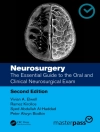Fractures are a common finding in children and it is estimated that 2.1% of all children will suffer at least one fracture before the age of 16. With young children in particular, the question may arise if this is related to child abuse. The aim of this book is to help physicians involved in child abuse cases to interpret radiological findings in light of the forensic circumstances under which they occurred. The authors present up-to-date literature related to the mechanisms underlying non-accidental cases of trauma.
In this book not only the radiological findings in child-abuse are discussed, but more importantly, these findings are analyzed from a forensic perspective. Careful attention is paid to evidence regarding reported trauma mechanisms and their clinical outcome; for example, can a fall from a couch result in a femoral fracture, and if not, where is the supporting evidence?
قائمة المحتويات
From the contents: Fractures in child abuse. Differential diagnosis of pediatric fractures.- Skull. Signs, symptoms and complications. Skull fractures and intra-cranial pathology. Accidental and non-accidental skull fractures. Dating skull fractures. Skull base fractures. Craniofacial fractures.- Ribs. Signs, symptoms and complications. Rib fractures and child abuse. Differential diagnosis of accidental and non-accidental causes of rib fractures.- Clavicle, sternum, scapula, spine and pelvis.- Extremities. Diaphyseal fractures. Epiphyseal and metaphyseal fractures. Humerus. Radius and ulna. Femur. Tibia and fibula. Shaft fractures of the lower extremities. Hands and feet. Subperiostal hemorrhage.- Trauma-related differential diagnosis. Accidental fractures. Fall from low height, from bunk beds, strollers and highchairs. Falls from stairs, out of shopping carts and from trampolines.- Disease-related differential diagnosis. Fractures. Imaging techniques.- Post mortem imaging. Dating fractures.












